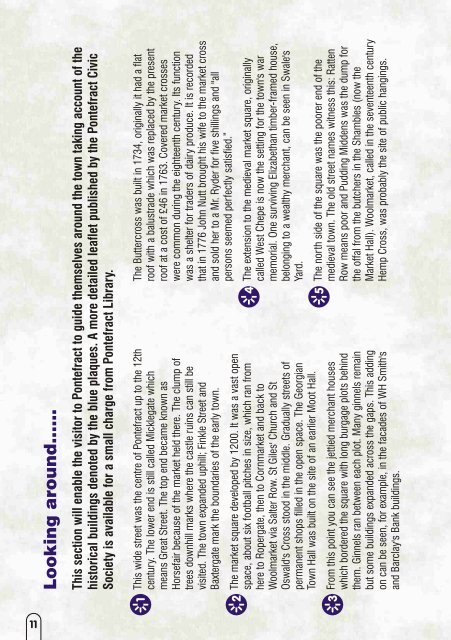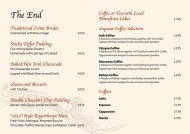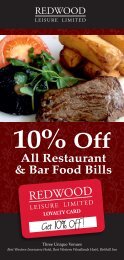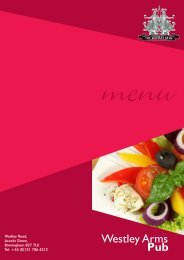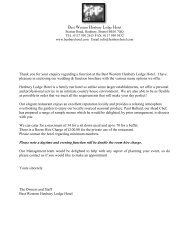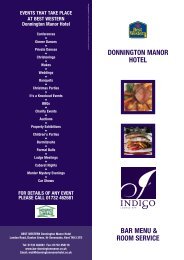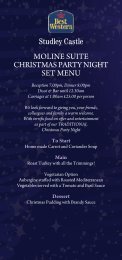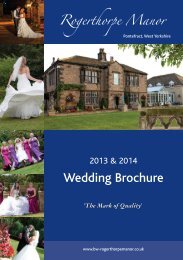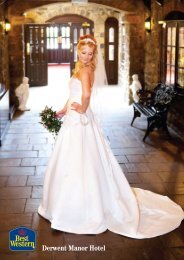Pontefract Visitor Booklet A5 new 2
Pontefract Visitor Booklet A5 new 2
Pontefract Visitor Booklet A5 new 2
- No tags were found...
You also want an ePaper? Increase the reach of your titles
YUMPU automatically turns print PDFs into web optimized ePapers that Google loves.
123Looking around……This section will enable the visitor to <strong>Pontefract</strong> to guide themselves around the town taking account of thehistorical buildings denoted by the blue plaques. A more detailed leaflet published by the <strong>Pontefract</strong> CivicSociety is available for a small charge from <strong>Pontefract</strong> Library.This wide street was the centre of <strong>Pontefract</strong> up to the 12thcentury. The lower end is still called Micklegate whichmeans Great Street. The top end became known asHorsefair because of the market held there. The clump oftrees downhill marks where the castle ruins can still bevisited. The town expanded uphill; Finkle Street andBaxtergate mark the boundaries of the early town.The market square developed by 1200. It was a vast openspace, about six football pitches in size, which ran fromhere to Ropergate, then to Cornmarket and back toWoolmarket via Salter Row. St Giles' Church and StOswald's Cross stood in the middle. Gradually streets ofpermanent shops filled in the open space. The GeorgianTown Hall was built on the site of an earlier Moot Hall.From this point you can see the jettied merchant houseswhich bordered the square with long burgage plots behindthem. Ginnels ran between each plot. Many ginnels remainbut some buildings expanded across the gaps. This addingon can be seen, for example, in the facades of WH Smith'sand Barclay's Bank buildings.45The Buttercross was built in 1734, originally it had a flatroof with a balustrade which was replaced by the presentroof at a cost of £46 in 1763. Covered market crosseswere common during the eighteenth century. Its functionwas a shelter for traders of dairy produce. It is recordedthat in 1776 John Nutt brought his wife to the market crossand sold her to a Mr. Ryder for five shillings and "allpersons seemed perfectly satisfied.”The extension to the medieval market square, originallycalled West Chepe is now the setting for the town's warmemorial. One surviving Elizabethan timber-framed house,belonging to a wealthy merchant, can be seen in Swale'sYard.The north side of the square was the poorer end of themedieval town. The old street names witness this: RattenRow means poor and Pudding Middens was the dump forthe offal from the butchers in the Shambles (now theMarket Hall). Woolmarket, called in the seventeenth centuryHemp Cross, was probably the site of public hangings.11


